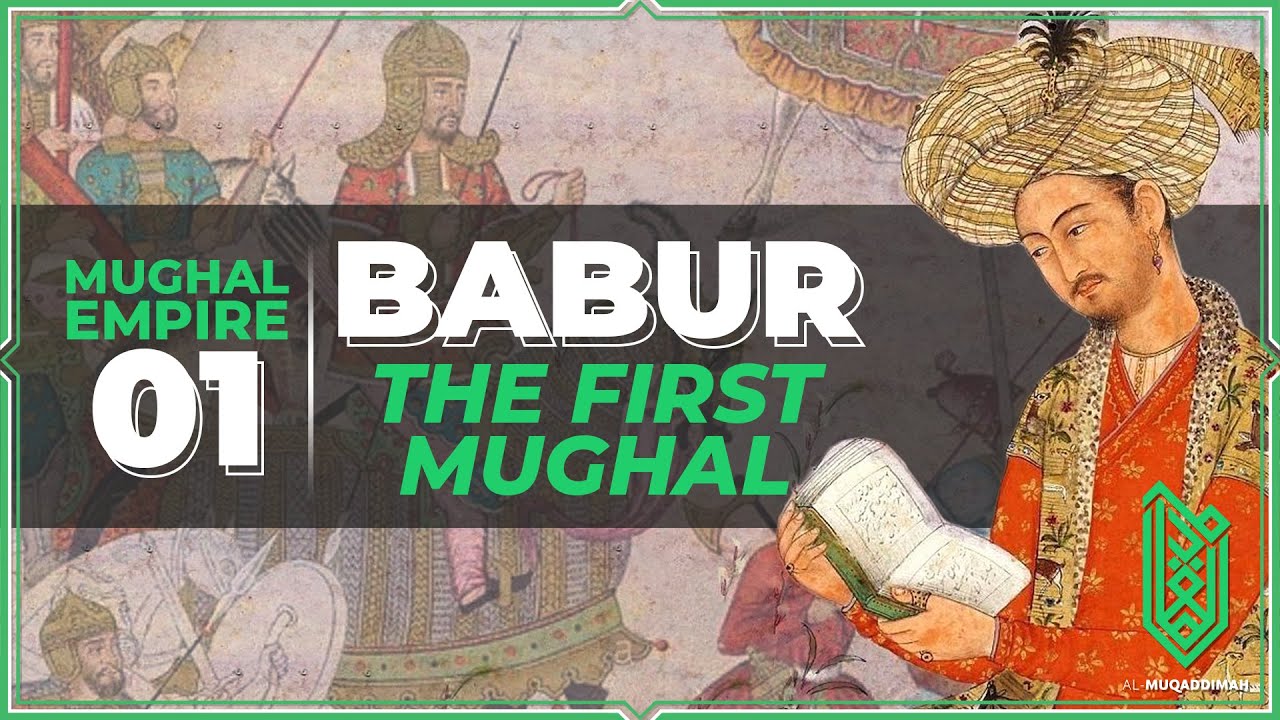SEJARAH BERDIRINYA DAULAH MUGHAL DI INDIA
Summary
TLDRThe video discusses the history of the Mughal Empire, founded by Zahiruddin Muhammad Babur between 1526 and 1530. Babur, a descendant of Timur, initially aimed to capture Samarkand but later expanded his empire to Kabul and then India, capitalizing on internal strife. In 1525, Babur conquered Punjab and eventually defeated Ibrahim Lodi in the Battle of Panipat, establishing Mughal rule in India for over three centuries. The video highlights the significant influence of the Mughal Empire on Indian civilization, particularly in introducing Islamic culture to a predominantly Hindu region.
Takeaways
- 📜 The Mughal Empire was established by Zahiruddin Muhammad Babur from 1526 to 1530 AD.
- 👑 Babur was a descendant of Timur, with a lineage that included the ruler Umar Mirza of Ferghana.
- 🧒 Babur inherited leadership from his father when he was just 11 years old, with ambitions to conquer Samarkand.
- ⚔️ After an initial defeat, Babur, with support from the Safavid Empire, successfully took over Samarkand in 1494 AD.
- 🏰 Babur's next conquest was Kabul, now the capital of Afghanistan, before extending his expansion into India.
- 🇮🇳 India was facing internal turmoil under the leadership of Ibrahim Lodi when Babur set his sights on the region.
- 🤝 Alam Khan, a relative of Ibrahim Lodi, sought Babur's help to overthrow Ibrahim, presenting an opportunity for Babur.
- 📅 In 1525, Babur took control of Punjab and then moved on to defeat Ibrahim Lodi in Delhi, establishing the Mughal Empire on April 21, 1526.
- ✨ The Mughal Empire brought significant Islamic influence to India, integrating with the predominantly Hindu population.
- 🕌 Despite being a minority, the Mughals established a powerful presence and contributed to a new Islamic civilization in India.
Q & A
Who was Zahiruddin Muhammad Babur?
-Zahiruddin Muhammad Babur was the founder of the Mughal Empire, ruling from 1526 to 1530 CE. He was a descendant of Timur on his father's side and Genghis Khan on his mother's side.
At what age did Babur inherit his leadership role?
-Babur inherited his leadership role at the age of 11 after his father passed away.
What was Babur's initial ambition, and what was his first target for conquest?
-Babur's initial ambition was to conquer Samarkand, an important city in Central Asia. Despite failing in his first attempt, he eventually succeeded in capturing it in 1494.
How did Babur succeed in his conquest of Samarkand?
-Babur succeeded in capturing Samarkand with the help of additional support from the Safavid dynasty.
What was Babur's next target after Samarkand?
-After capturing Samarkand, Babur set his sights on Kabul, the capital of modern-day Afghanistan.
What political situation in India prompted Babur to expand his influence there?
-India was in a state of crisis under the rule of Ibrahim Lodi, and Alam Khan, along with other governors like the one in Lahore, sought Babur's help to overthrow Ibrahim Lodi.
How did Babur take advantage of the political instability in India?
-Babur used the opportunity presented by Alam Khan’s request for assistance to invade and conquer Punjab in 1525 CE, which eventually led him to defeat Ibrahim Lodi and capture Delhi.
When did Babur defeat Ibrahim Lodi, and what was the significance of the battle?
-Babur defeated Ibrahim Lodi on April 21, 1526, in the First Battle of Panipat. This victory marked the foundation of the Mughal Empire in India.
How long did the Mughal Empire last, and how did it impact Indian civilization?
-The Mughal Empire lasted for about three and a half centuries. It significantly influenced Indian civilization by introducing a new Islamic culture, despite the majority of the population being Hindu.
What role did Babur play in shaping the Islamic civilization in India?
-Although Babur was not originally from India, he laid the foundation for Islamic civilization in India through the establishment of the Mughal Empire, which brought Islam into the predominantly Hindu region.
Outlines

此内容仅限付费用户访问。 请升级后访问。
立即升级Mindmap

此内容仅限付费用户访问。 请升级后访问。
立即升级Keywords

此内容仅限付费用户访问。 请升级后访问。
立即升级Highlights

此内容仅限付费用户访问。 请升级后访问。
立即升级Transcripts

此内容仅限付费用户访问。 请升级后访问。
立即升级浏览更多相关视频

DAULAH MUGHAL!! Sejarah Peradaban Daulah Islam Di India

Bagian 1 ~ Peradaban Islam Pada Masa Daulah Mughal Di India

The rise and fall of the Mughal Empire - Stephanie Honchell Smith

Mughal rule in India | 1450 - Present | World History | Khan Academy

How The Timurids Created A Renaissance Amidst Civil Wars | History Documentary

Babur, the Founder of the Mughal Empire | 1483CE - 1530CE | Al Muqaddimah
5.0 / 5 (0 votes)
